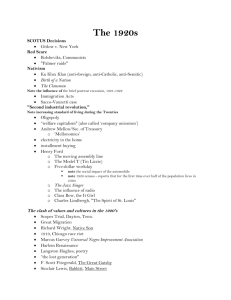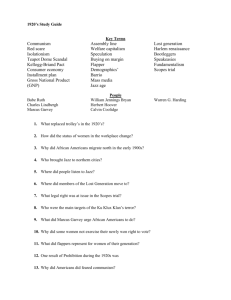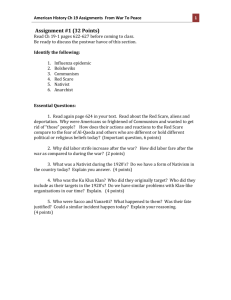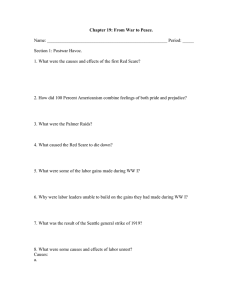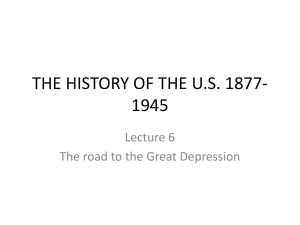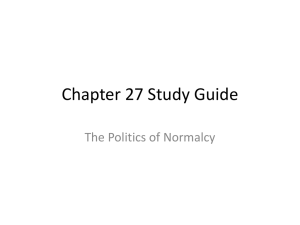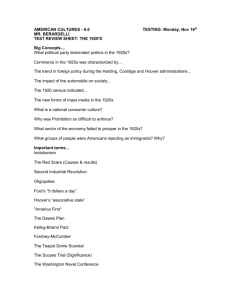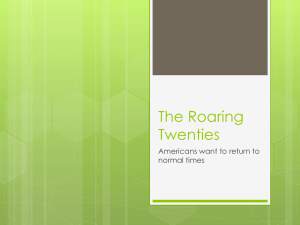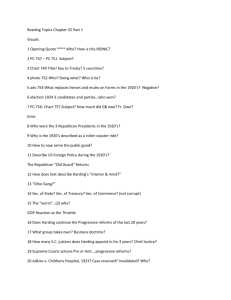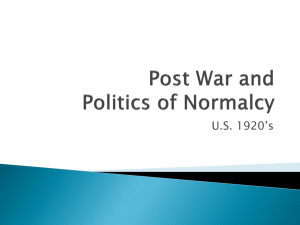Essay Questions
advertisement
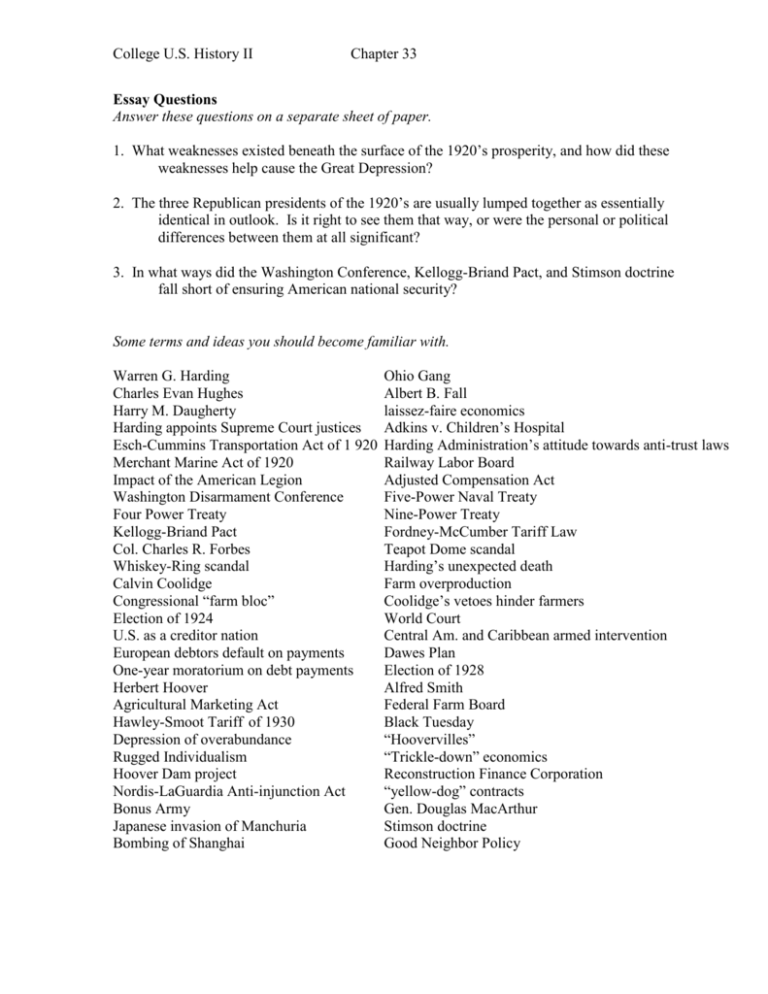
College U.S. History II Chapter 33 Essay Questions Answer these questions on a separate sheet of paper. 1. What weaknesses existed beneath the surface of the 1920’s prosperity, and how did these weaknesses help cause the Great Depression? 2. The three Republican presidents of the 1920’s are usually lumped together as essentially identical in outlook. Is it right to see them that way, or were the personal or political differences between them at all significant? 3. In what ways did the Washington Conference, Kellogg-Briand Pact, and Stimson doctrine fall short of ensuring American national security? Some terms and ideas you should become familiar with. Warren G. Harding Charles Evan Hughes Harry M. Daugherty Harding appoints Supreme Court justices Esch-Cummins Transportation Act of 1 920 Merchant Marine Act of 1920 Impact of the American Legion Washington Disarmament Conference Four Power Treaty Kellogg-Briand Pact Col. Charles R. Forbes Whiskey-Ring scandal Calvin Coolidge Congressional “farm bloc” Election of 1924 U.S. as a creditor nation European debtors default on payments One-year moratorium on debt payments Herbert Hoover Agricultural Marketing Act Hawley-Smoot Tariff of 1930 Depression of overabundance Rugged Individualism Hoover Dam project Nordis-LaGuardia Anti-injunction Act Bonus Army Japanese invasion of Manchuria Bombing of Shanghai Ohio Gang Albert B. Fall laissez-faire economics Adkins v. Children’s Hospital Harding Administration’s attitude towards anti-trust laws Railway Labor Board Adjusted Compensation Act Five-Power Naval Treaty Nine-Power Treaty Fordney-McCumber Tariff Law Teapot Dome scandal Harding’s unexpected death Farm overproduction Coolidge’s vetoes hinder farmers World Court Central Am. and Caribbean armed intervention Dawes Plan Election of 1928 Alfred Smith Federal Farm Board Black Tuesday “Hoovervilles” “Trickle-down” economics Reconstruction Finance Corporation “yellow-dog” contracts Gen. Douglas MacArthur Stimson doctrine Good Neighbor Policy

